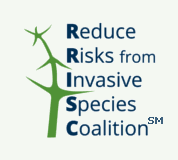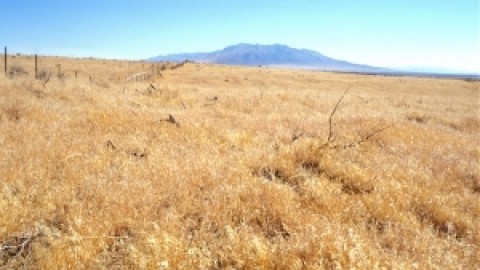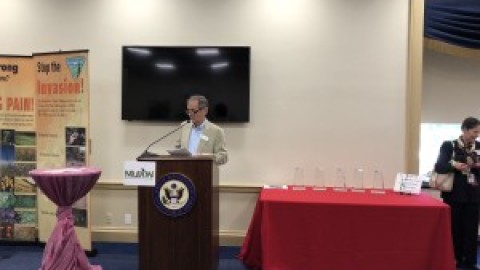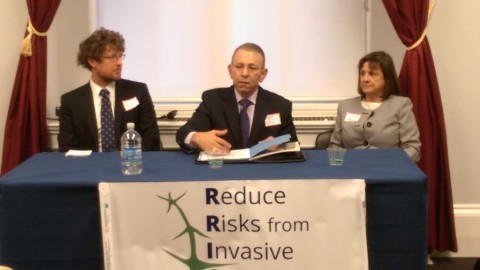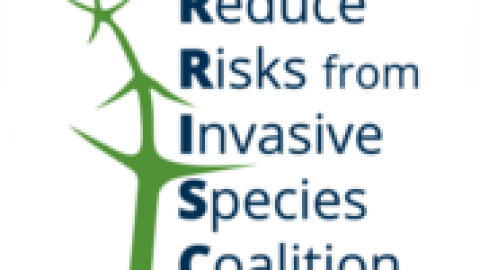 By: Stephanie Licciardi, RRISC Correspondent
By: Stephanie Licciardi, RRISC Correspondent
Phragmites is a wetland grass that grows along the Atlantic coast. Otherwise known as common weed, it grows aggressively, at times up to 15 feet tall. There are two main subspecies found in on the East Coast: a native and a nonnative species. The native species of phragmites is rare, non-invasive, and is inclined to live in a mixed wetland. The nonnative species was brought to the US accidentally in the late 1800s from Eurasia. Since then, invasive phragmites has spread by targeting wetlands that have been disturbed, either by natural or human causes. Hurricanes wash away soil and tear away trees from wetlands, leaving an optimal situation for phragmites to establish itself. In human-induced circumstances, phragmites flourish in man-made ditches, abandoned hay roads, and other areas of human interaction.
Once phragmites is introduced into an area, it spreads by horizontal underground rhizomes, which create thick underground mats that send out roots and shoots that create new plants. They can expand up to 30 feet per year, contributing to phragmites’ quick spread. Its inclination to live in a monoculture prevents other species from cohabiting the marsh.
Phragmites reduces the biodiversity of a marsh. Since it grows as a monoculture, it blocks out native marsh vegetation. It provides little to no food or shelter to wildlife in the marshes, while eliminating preexisting habitats for fish and birds. As a perennial, phragmites dies back every fall, leaving dry vegetation in its place. The high concentrations of dry plant material put communities at risk to fast-spreading fires, threating residential, commercial, and natural areas. On a positive note, there is speculation that coastal phragmites could help protect marshes from rapid sea level rise.
Due to the thick mat of rhizomes underneath the phragmites, it has proven very difficult to control and remove the species. Biological controls are often costly and have very little positive impact on the invasive plant. It is time consuming and ineffective to physically remove the dense mat of underground rhizomes, not only because of the type of machinery needed, but also because extreme care must be taken to prevent introducing the species elsewhere. Additionally, established phragmites have allowed humans to develop in low-lying marsh areas, so removal of the plant may restore tidal flow in impractical areas.
Careful application of herbicides to phragmites, especially when used simultaneously with non-chemical methods, has proven to be one of the most successful methods of controlling the spread of the species. It is important to understand and target the landscape issues that allowed the phragmites to invade. Usually, herbicides must be applied multiple times to ensure the whole plant is treated and killed.
